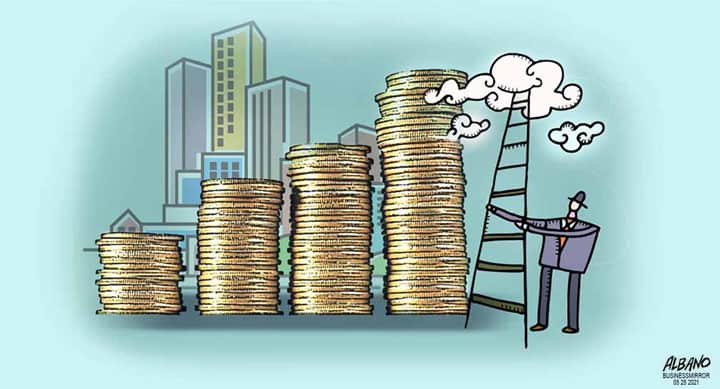
The families of workers receiving fixed wages would not be surprised at all with the findings of a recent study, which showed Manila as the third most expensive city among six cities in Southeast Asia despite having the lowest average salary.
They know how expensive life has become in the Philippine capital. What little help they are getting from the government or their employers during this pandemic can barely keep up with inflation.
They are getting squeezed. Many are not able to stay afloat. Their anemic wages can barely afford household expenses and necessities. They are having a hard time paying for medical care, food, housing, electricity, water, tuition and other costs that keep rising.
The typical Filipino workers are no longer able to keep up with the rising cost of living. They do not need a study to tell them this truth.
What more, the tricycle, pedicab and jeepney drivers and ambulant vendors—all those who work in the informal economy that comprise around 38 percent of the working population according to government estimates?
How much harder has life been for them since their incomes have been affected by lockdown and quarantine restrictions? These informal workers cannot avail themselves of financial assistance from an employer. They have to rely solely on the government for help.
According to data aggregator iPrice Group, a person living in Manila needs P50,798 every month to spend on rent, food, transportation and utilities.
With an average monthly salary of only P18,900, the cost of living in Manila is 168 percent higher than the average salary in the city, the study noted, “so it comes as no surprise that about 35 percent of Metro Manila’s population is reported to live in unstable, badly constructed shelters in the slums, and 11 percent of these reside near railroads or garbage dumps.”
Comparing the estimated average monthly cost of living for a single person in six Southeast Asian mega cities, Manila’s cost of living was found ahead of Kuala Lumpur, Malaysia by 33 percent, Ho Chi Minh, Vietnam by 28 percent, and Jakarta, Indonesia by 24 percent.
As expected, Singapore is the most expensive place to live in the region. With a P119,732 monthly budget, its cost of living is at least 132 percent higher than the other Southeast Asian cities.
Bangkok, the capital city of Thailand, came in second with an estimated monthly cost of living of P51,500 for a single person, which is only a little higher than Manila’s.
The study also showed Manila having the second-highest rent prices among the six cities, right after Singapore.
“We all know that Singapore is way ahead of its Southeast Asian peers, so it’s quite surprising that a developing country’s capital city, which is way behind the aforementioned Lion City in terms of economic development, has the second-highest rent prices in the region,” the study said.
Without rent, the study showed a resident still needs P28,800 to survive in Manila—still beyond the average income in the city.
Clearly, increasing the daily minimum wage according to standards set by the wage boards would not be enough. These increments are usually so small they fail to even come close to the estimated family living wage. Past increases have been insignificant to keep up with the rising cost of living and inflation. In particular, workers spend up to three-fourths of their wages on food, and food prices tend to increase at a faster rate than non-food products.
Nowadays, even a family in the middle and higher income brackets are having a hard time making ends meet. The cost of utilities alone, including electricity, which is among the highest in the world, eats up most of their household budgets.
The iPrice Group study only showed what most Filipinos living in Manila have known all along: That if the prices of goods and other commodities are compared with income levels in the city, you would find Filipinos at a general disadvantage. There is no fair market pricing because the prices of goods are not compatible with the basic income of most Filipinos.
Only the wealthiest with no spending limits will not complain.
Article and Photo originally posted by Business Mirror last May 25, 2021 and written by Ruben Cruz Jr..







More Stories
Vista Land Celebrates 50 Years with Sandiwa: An Event Honoring Leadership, Legacy, and the Filipino Dream of Homeownership
Vista Land Celebrates Love Month in Ilocos Region
Vista Land Bridges Cebuano Heritage and Progress with Valencia by Vista Estates